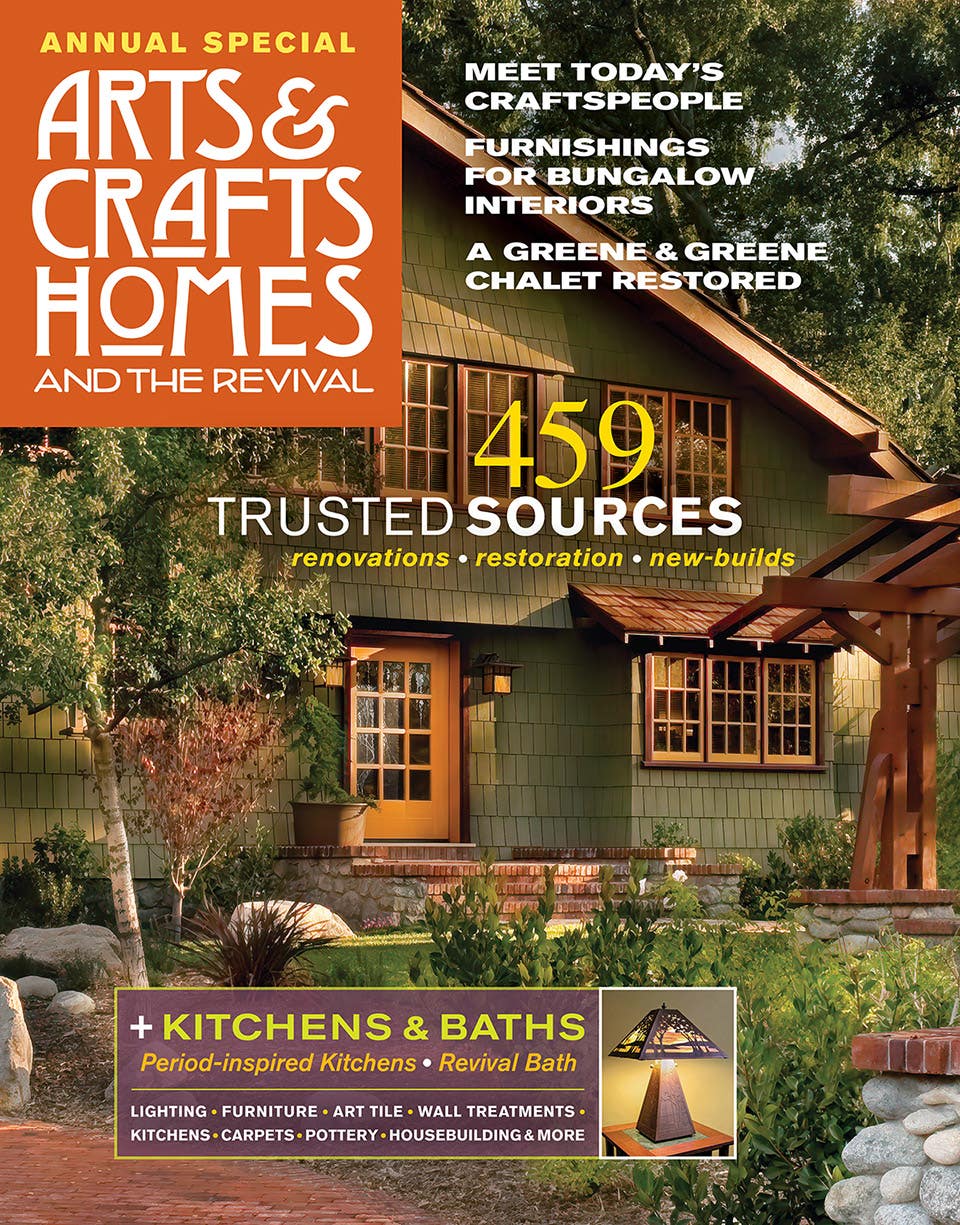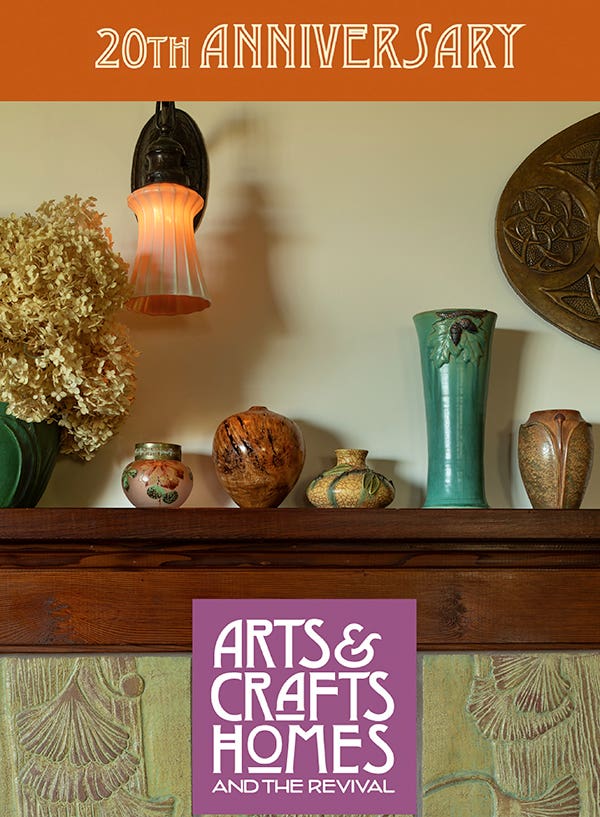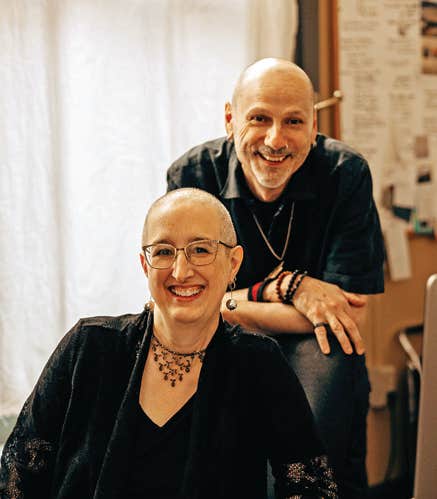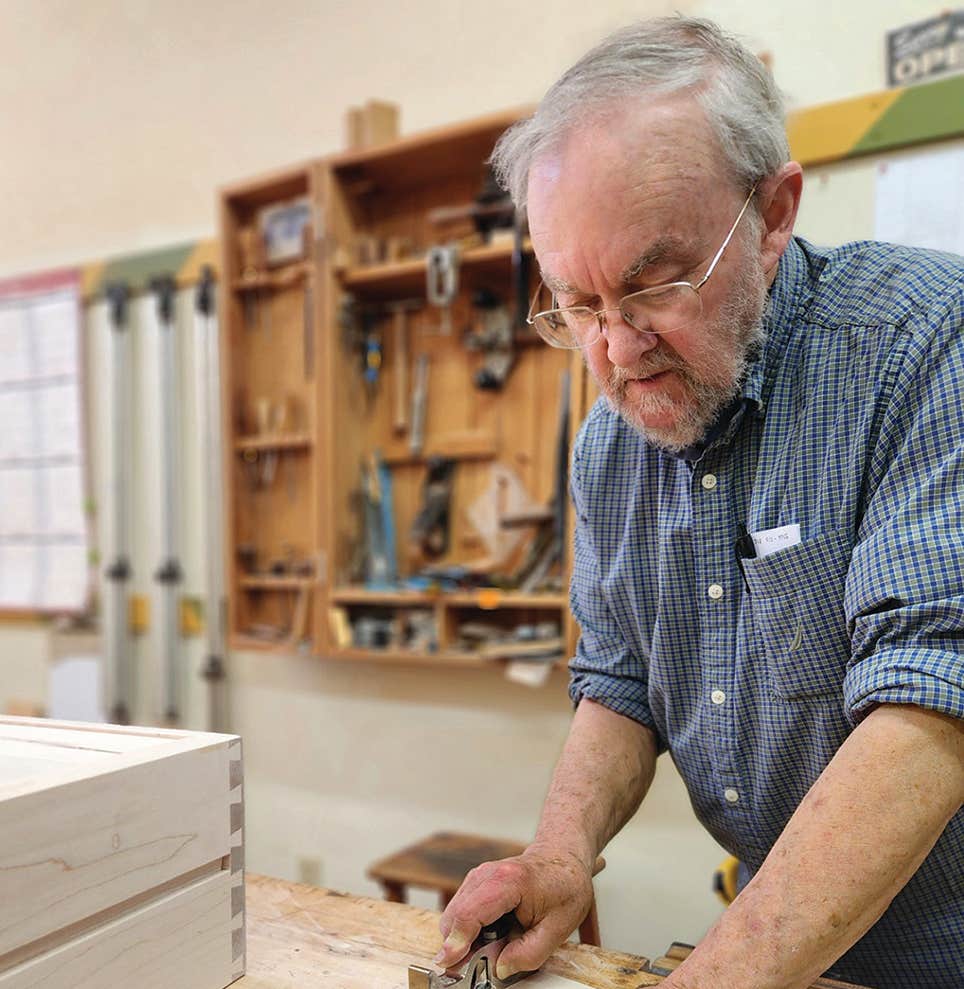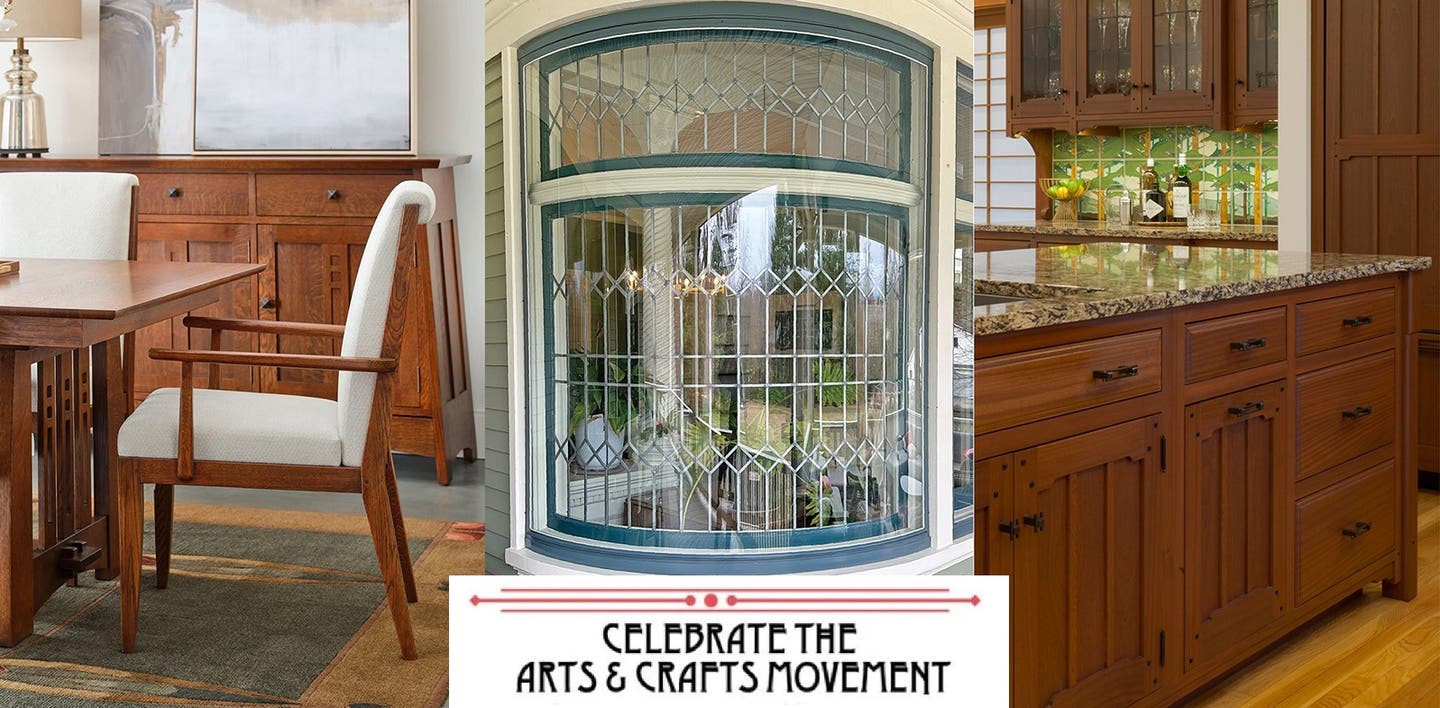The Guild: Ann Wallace and Prairie Textiles
Working as a theatrical designer in Minnesota’s Twin Cities, Ann Wallace segued into an unexpected career change when her next-door neighbor—a struggling architecture student—asked if she could whip up a…
Working as a theatrical designer in Minnesota’s Twin Cities, Ann Wallace segued into an unexpected career change when her next-door neighbor—a struggling architecture student—asked if she could whip up a pair of tab curtains for the “misunderstood” Arts & Crafts home he was renovating. That neighbor was David Heide, who is now well known for his residential designs in the Arts & Crafts idiom. “I knew Ann had made costumes for the Guthrie
Theater,” he says, “so I deduced that she had a sewing machine.”
Not only did Ann agree to make his curtains, but she also collaborated with David to adapt a period checkerberry pattern as a corner motif. Heide suggested she put out some business cards when his place was shown on the Twin Cities house tour. “I got three orders,” says Ann. “I almost fainted.” She was in business full-time within six months. “Prairie Textiles was a modest success right from the beginning. At this point, the company name should be Arroyo Textiles, but it’s too late to change it.”
Ann grew up in New York City and Washington, D.C., and taught at Tufts University in Massachusetts. Then she moved to the Midwest, “and really saw Arts & Crafts architecture for the first time.” In 1998, Ann moved her studio to downtown Los Angeles and became one of the original exhibitors at Craftsman Weekend in Pasadena. Asked if her sojourn in the Midwest influenced her design sense, she says yes—but the climate differences in the two regions matter even more.
“In the Midwest, people will do anything to get a scrap of daylight coming in their windows,” she says. They’ll use rings instead of a rod pocket, for example, to let in a tiny bit more light. “In California, they couldn’t care less about that. Here, the worry is sunlight fading their woodwork and their fabrics.”
Her textile line includes throw pillows, runners and table linens, and bed coverings, all hand-sewn in natural fabrics that lend themselves to customization. She’s added natural fabric roller shades, made the old-fashioned way with spring mounts. They lend themselves to her ever-evolving library of original stencil designs. Ann notes the Arts & Crafts revival attracts people who aren’t even aware of it as a movement. “The graphics are gorgeous. It’s a decorative style with an intellectual context."
Shop Talk
Ann Wallace, the company, is a small studio in L.A.’s fashion district. Everything is made to order. Ann has three longtime employees. The décor is textile heavy: three sewing machines, two big cutting tables, rolls of fabric and stacks of appliqué, and stencil designs tacked in a colorful collage on a corkboard.
In most cases, goods are made by hand, with some steps (like satin stitch embroidery,
for example) hand-guided on a sewing machine. “I have skilled sewers who can do beautiful
appliqué,” Ann says. “We try to make sure things are reasonably affordable.”
Fashioning a Motif
Certain Arts & Crafts motifs keep popping up in endless variations that never seem to go out of style. “If it’s a natural shape that lends itself to abstraction, that’s perfect for Arts & Crafts,” Ann Wallace says.
Customers are especially drawn to stylized roses and ginkgo leaves. As a result, Wallace has developed an entire page of rose appliqués, and four different ginkgo stencils.
Interpreting a motif in techniques as varied as embroidery, appliqué, and stenciling takes some trial and error. A plain design, like her Simple Rose, is more striking as an appliqué than a stencil, she says. More complex designs sometimes demand specific treatments, such as embroidery. “The long, skinny lines of Lily look much better as a satin stitch than they do stenciled.”
In some cases, it doesn’t matter whether the motif is stenciled or appliquéd—it’s a question of personal taste. For instance, “when you are stenciling, you can stipple and be more painterly. With appliqué, you can let your freak flag fly if you like…light colors on dark fabric, say; anything goes.”
Ann Wallace, Los Angeles, CA: (213) 614-1757, annwallace.com
Mary Ellen Polson is a creative content editor and technical writer with over 20 years experience producing heavily illustrated know how and service journalism articles, full-length books, product copy, tips, Q&As, etc., on home renovation, design, and outdoor spaces.

